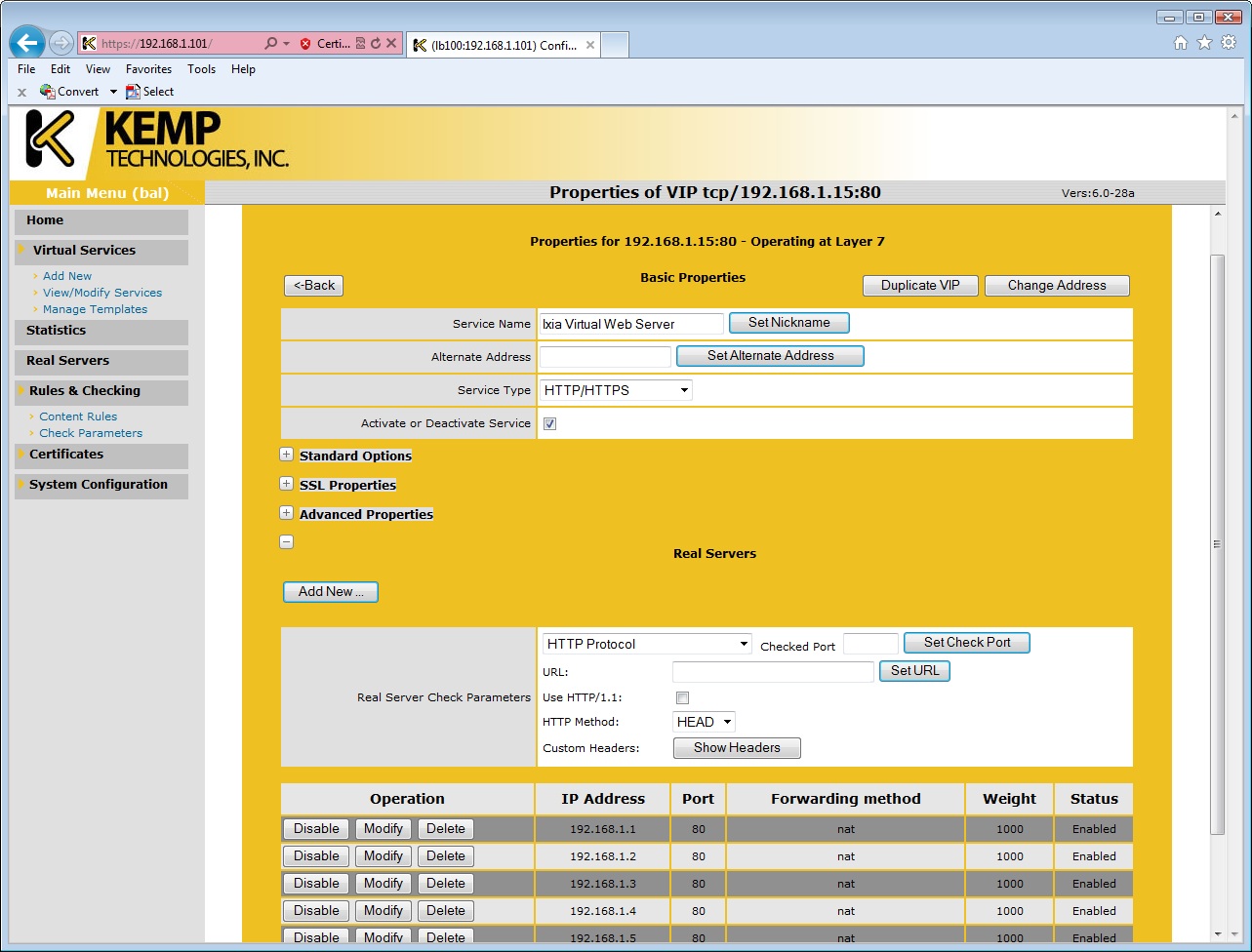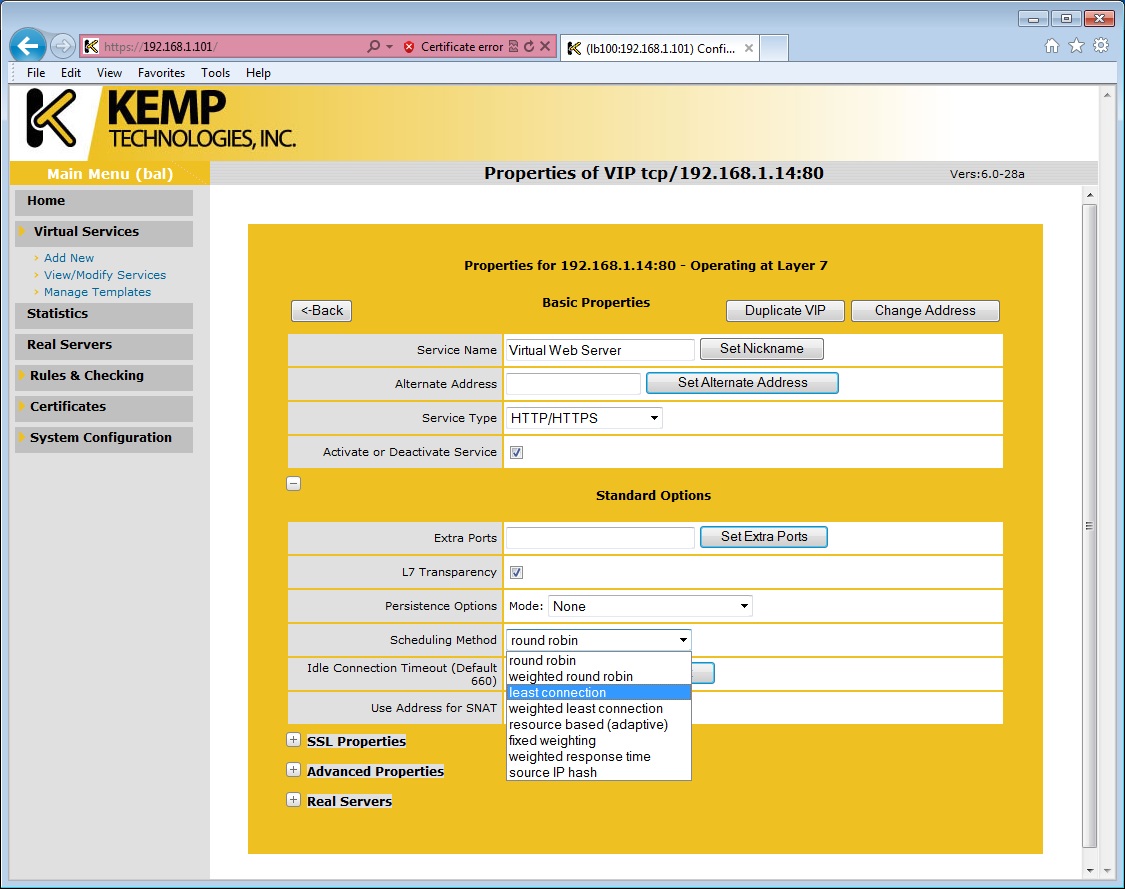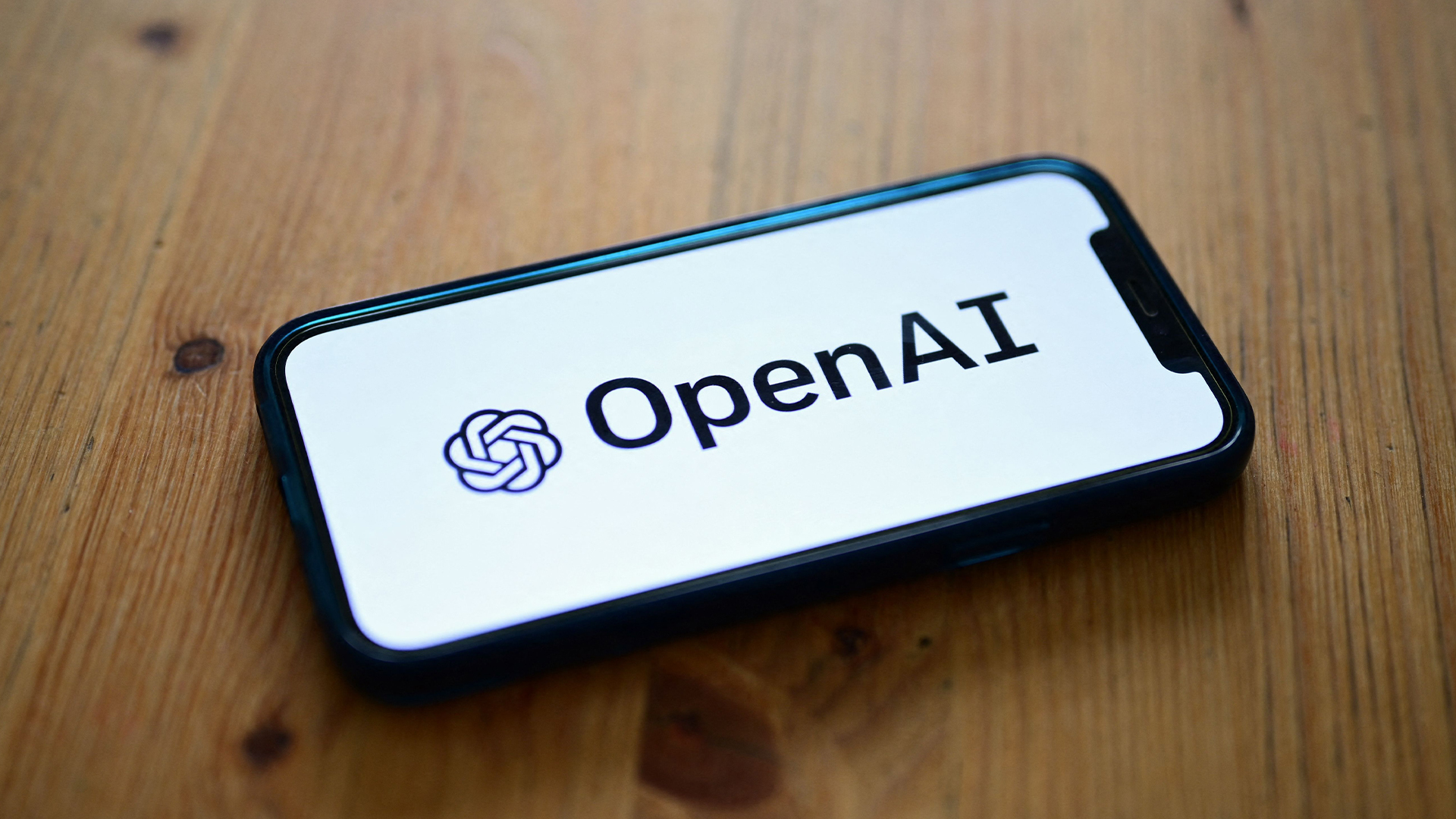Kemp Technologies LoadMaster 5300 review
Kemp’s flagship load balancing appliance comes with beefed up Intel Xeon processors, 8GB of RAM and 10-Gigabit support. It's also unmatched when it comes to value for money.
The LoadMaster 5300 delivers plenty of load balancing features and is capable of handling high volumes of web traffic. We found it easy to deploy, it is 10-Gigabit enabled and is offered at an extremely competitive price.

Kemp Technologies aims to deliver the most affordable server load balancers on the market it continues this tradition with the LoadMaster 5300.
The 5300 sports a Xeon E3 processor plus 8GB of DDR3 memory and brings 10-Gigabit (10GbE) support into the equation. You have eight Gigabit ports across the front panel and a couple of 10GbE SFP ports which accepted our Intel and Emulex 10GBase-SR transceivers without any problems.
The 5300 provides server load balancing, Layer 4/7 content switching and ASIC-based SSL acceleration for up to 9,300 TPS (transactions per second). It supports 1,000 physical and 1,000 virtual servers out-of-the-box and has a high L4 traffic throughput of 8Gbps.

Once you've created a virtual server, you can provide it with a farm of physical servers
Deployment modes
The single-arm deployment mode requires all physical and virtual servers to be on the same subnet. It only uses port Eth0 but this can be made up of a bonded link taken from any of the physical ports. To use all ports separately, the two-arm mode is required which places physical and virtual servers on separate subnets
All LoadMasters adhere to the standard concepts for server load balancing. They employ virtual servers to intercept web traffic and these are assigned to farms of physical servers where load balancing is carried out across all members.
Three installation options are available as you can use a CLI (command line interface) connection, plug in a local monitor and keyboard or point a browser at the appliance's default IP address. We opted for the latter and after applying a license file, were ready to go.
Sign up today and you will receive a free copy of our Future Focus 2025 report - the leading guidance on AI, cybersecurity and other IT challenges as per 700+ senior executives

The LoadMaster 5300 offers eight different types of load balancing schedules
Dave is an IT consultant and freelance journalist specialising in hands-on reviews of computer networking products covering all market sectors from small businesses to enterprises. Founder of Binary Testing Ltd – the UK’s premier independent network testing laboratory - Dave has over 45 years of experience in the IT industry.
Dave has produced many thousands of in-depth business networking product reviews from his lab which have been reproduced globally. Writing for ITPro and its sister title, PC Pro, he covers all areas of business IT infrastructure, including servers, storage, network security, data protection, cloud, infrastructure and services.
-
 ‘1 engineer, 1 month, 1 million lines of code’: Microsoft wants to replace C and C++ code with Rust by 2030 – but a senior engineer insists the company has no plans on using AI to rewrite Windows source code
‘1 engineer, 1 month, 1 million lines of code’: Microsoft wants to replace C and C++ code with Rust by 2030 – but a senior engineer insists the company has no plans on using AI to rewrite Windows source codeNews Windows won’t be rewritten in Rust using AI, according to a senior Microsoft engineer, but the company still has bold plans for embracing the popular programming language
By Ross Kelly Published
-
 Google drops $4.75bn on data center and energy firm Intersect
Google drops $4.75bn on data center and energy firm IntersectNews The investment marks the latest move from Google to boost its infrastructure sustainability credentials
By Nicole Kobie Published
-
 OpenAI says prompt injection attacks are a serious threat for AI browsers – and it’s a problem that’s ‘unlikely to ever be fully solved'
OpenAI says prompt injection attacks are a serious threat for AI browsers – and it’s a problem that’s ‘unlikely to ever be fully solved'News OpenAI details efforts to protect ChatGPT Atlas against prompt injection attacks
By Nicole Kobie Published
